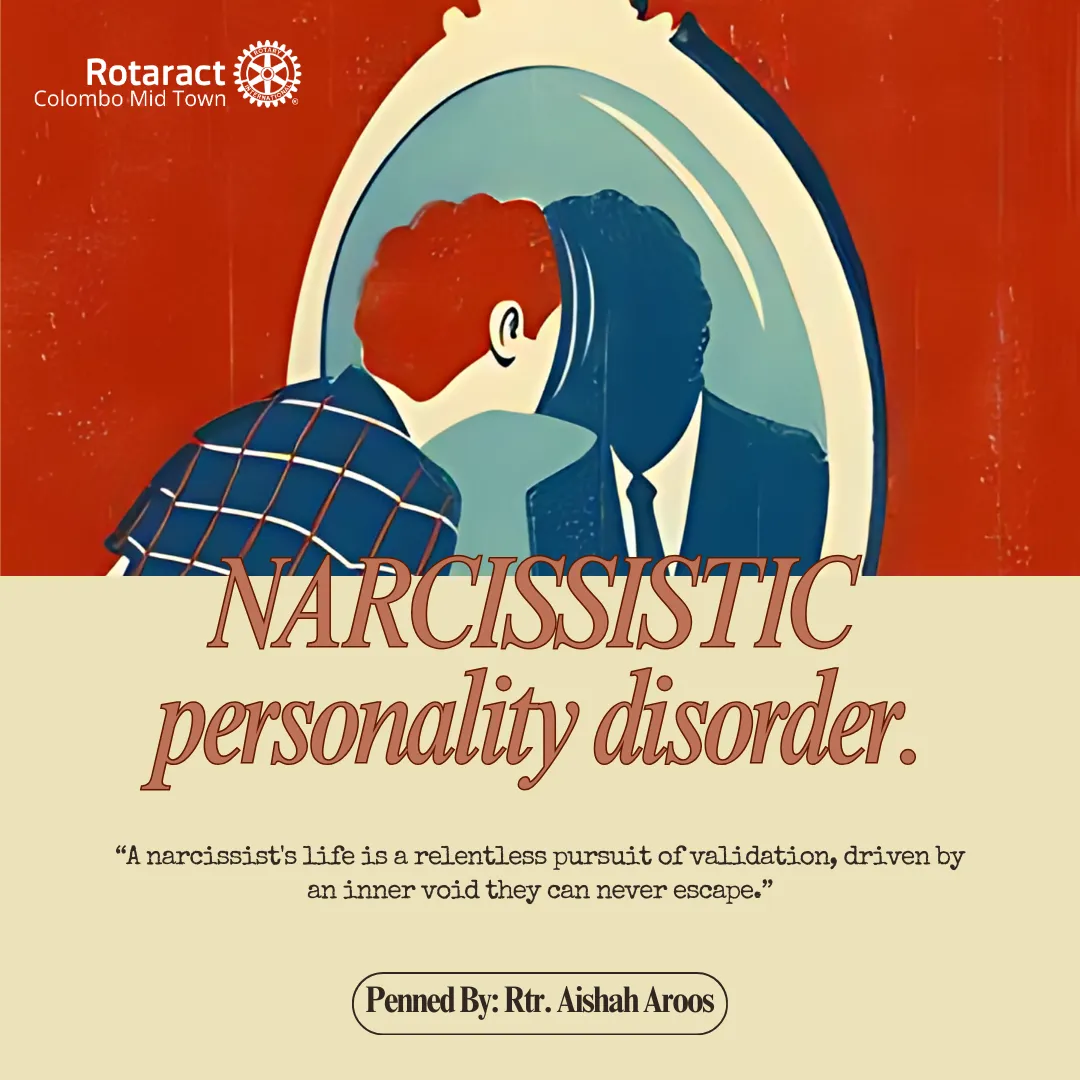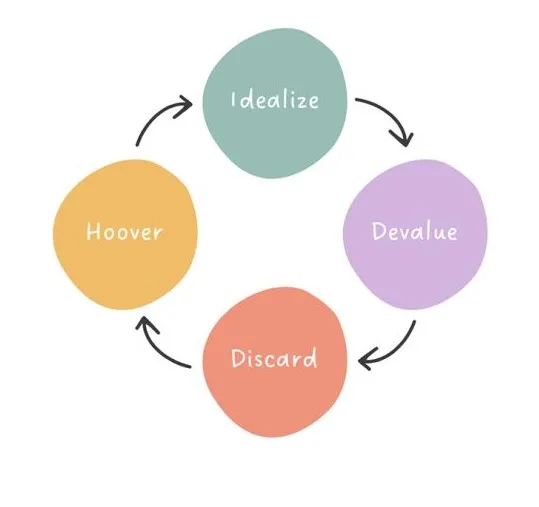Be grateful that you do not view the world through the lens of a narcissist. If you did, it would be a very sad existence, which is the reality for a narcissist. The narcissist’s life, in many ways, is their own karma.
Narcissistic Personality Disorder (NPD)
August 31, 2025
Rtr. Aishah Aroos

NPD is one of the most shame-based personality disorders. It is characterized by low empathy, entitlement, selfishness, manipulativeness, hypersensitivity to criticism, superficiality, arrogance, a chronic need for control, rigidity, and an excessive need for admiration and validation (known as narcissistic supply). NPD often serves as a defense mechanism to hide one’s true self from shame, fear, and vulnerability. The core feature of NPD is extreme selfishness, aimed at protecting and pleasing oneself. Narcissistic individuals create a false self for the external world to see, which often appears kind, considerate, and “perfect.” Let’s dive into what causes NPD
Causes of Narcissistic Personality Disorder (NPD).
Trauma, neglect, physical or emotional abuse, and abandonment can all contribute to the risk of developing Narcissistic Personality Disorder (NPD). A chaotic and insecure attachment style during childhood is another significant factor. Additionally, excessive praise focused solely on achievements rather than character can also contribute to the development of NPD. When a child consistently receives praise only for their accomplishments rather than for their character, it can create an environment that fosters narcissistic traits. This can be another pathway of setting up NPD. Everything they subconsciously know and hate about themselves is always projected on the individual which takes us to what narcissistic projection is.
Narcissistic Projection
Projection allows individuals with Narcissistic Personality Disorder to maintain an idealized internal self. When anything threatens the external “false self” they present, they often react explosively toward others. They project their insecurities and emotional instability onto those around them. When they experience negative emotions such as insecurity, guilt, shame, or envy, they struggle to acknowledge these feelings within themselves. Instead, they project these emotions onto others by falsely attributing them to someone else. They also have a deep need to maintain an image of grandiosity and perfection.
The entire disorder stems from an avoidance of the shame associated with their true self. Deep down, they hate themselves and are very insecure at their core. Projection allows them to avoid self-blame and preserve their fragile self-esteem. It is a defense mechanism to keep them from feeling like a “bad object.”
The Four Stages of Narcissistic Abuse

- Idealization (also known as the Love Bombing Stage): During this stage, the narcissist, studies their target like a chameleon, transforming themselves into everything the target desires. They shower the target with excessive attention, admiration, and affection in an attempt to win them over. The goal is to become the center of the target’s universe. This stage often feels very rushed and expedited.
- Devaluation: The second stage occurs once the narcissist has gained your trust. This is where manipulation begins, which may manifest as passive-aggressive behavior, criticism, or putting you down in various ways. The narcissist starts to make snide comments, and their behavior suddenly changes. Essentially, this stage is aimed at controlling the other person after initially winning them over.
- Discard: The third stage involves using the silent treatment and cutting off all contact. At this point, the narcissist has grown bored of you and feels you no longer serve a purpose. Blame-shifting, abrupt abandonment, and public smearing are executed in a cruel and sudden manner. Finally, they discard you and begin seeking new sources of supply. Once the narcissist’s mask has dropped, they often ramp up a smear campaign, which is one big way for the narcissist to escape accountability.
- Hoovering: This term refers to the tactic used by narcissists to suck you back into the toxic relationship. The subtleness of this allows the narcissist to sort of pretend like they weren’t the one asking you back. They use strategic methods to create the opportunity to gaslight you. These tactics are designed to gauge your interest and see if you are still willing to engage in conversation or conflict. If you respond, they interpret it as an indication that you are still interested, thereby maintaining their power and control over you. Essentially, these hoovering tactics are a test, and you want to ace it by blocking, deleting, and ignoring them.
Once you have ignored, blocked, and established no contact with the narcissist, the smear campaign begins. What is a smear campaign? When you break away from a narcissist, they possess such an inflated sense of self that they genuinely believe they are superior to others. Therefore, when a victim or scapegoat attempts to leave the relationship, it results in a narcissistic injury. This injury must be compensated for, equalized, and addressed. So how do they do this? By abusing, smearing, destroying, and annihilating your reputation. When a narcissist can no longer control you, they will initiate a smear campaign against you, attacking your character to anyone who will listen. The goal is to isolate you. They will claim that the victim is guilty of horrible things that never happened; in fact, the accusations in the smear campaign will often reflect the very things the narcissist is guilty of.
When the narcissist can’t get to you directly, they may send in flying monkeys. These are individuals whom the narcissist recruits to work on their behalf. Flying monkeys are actively involved in the smear campaign, supporting and enabling the narcissist’s manipulative behavior. They can be friends, family members, colleagues, or acquaintances — anyone who blindly supports the narcissist, spreads their propaganda, and attacks anyone who challenges the narcissist’s behavior.
These enablers might be oblivious to the narcissist’s true nature, believing they are simply being loyal. However, they play a crucial role in perpetuating the cycle of abuse. Flying monkeys can engage in gaslighting, invalidate the victim’s experiences, and even escalate the abuse.
At the End of This, Can Narcissistic Personality Disorder Be Treated?
There is no cure for Narcissistic Personality Disorder (NPD). Core changes are generally impossible, but therapy can be helpful in some cases, depending on the individual. It may assist in managing certain symptoms.
